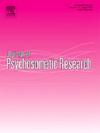Correlates of desire for hastened death in chronic illness: A cross-sectional network analysis
IF 3.3
2区 医学
Q2 PSYCHIATRY
引用次数: 0
Abstract
Objectives
Desire to hasten death (DHD) may reflect complex physical and psychosocial suffering. This study examined psychosocial and cognitive-affective correlates of DHD in patients with chronic physical illness using cross-sectional network analysis.
Methods
This cross-sectional analysis included 366 patients with renal, cardiovascular, or cerebrovascular disease were recruited from two hospitals in South Korea. Participants completed validated measures of DHD, physical quality of life (QOL), perceived burdensomeness (PB), thwarted belongingness (TB), fearlessness about death, hopelessness, helplessness, loss of autonomy, depression, and anxiety. Gaussian graphical models were estimated, and centrality, predictability, and relative importance were analyzed. Subgroup and covariate-adjusted analyses were also conducted.
Results
Overall, 11.0 % of participants reported high DHD, defined as a Schedule of Attitudes toward Hastened Death Abbreviated score of 3 or higher. The network explained 43.1 % of the variance in DHD. PB showed the strongest direct association with DHD, followed by hopelessness, anxiety, and helplessness. Although depression was not directly linked to DHD, it emerged as the most central node in the network. Relative importance analysis confirmed that PB and anxiety were most strongly associated with DHD. Subgroup analyses indicated that anxiety was more salient in the renal disease, while PB ranked highest in the cardio/cerebrovascular disease. These findings remained robust after adjusted analyses.
Conclusion
PB and anxiety were the most robust correlates of DHD, whereas depression played a central role in the network. Addressing perceived burden and emotional distress may be relevant for understanding and managing DHD among individuals with chronic illness.
慢性病患者加速死亡的相关因素:横断面网络分析。
目的:加速死亡的欲望(DHD)可能反映了复杂的身体和心理痛苦。本研究使用横断面网络分析方法检测慢性躯体疾病患者的DHD的社会心理和认知情感相关性。方法:本横断面分析包括来自韩国两家医院的366例肾脏、心脑血管疾病患者。参与者完成了DHD、身体生活质量(QOL)、感知负担(PB)、受挫归属感(TB)、对死亡的无所畏惧、绝望、无助、自主性丧失、抑郁和焦虑的有效测量。估计高斯图形模型,并分析中心性、可预测性和相对重要性。还进行了亚组和协变量调整分析。结果:总体而言,11.0%的参与者报告了高DHD,定义为对加速死亡的态度表缩短得分为3或更高。网络解释了43.1%的DHD差异。PB与DHD的直接关系最强,其次是绝望、焦虑和无助。尽管抑郁症与DHD没有直接联系,但它是网络中最中心的节点。相对重要性分析证实PB和焦虑与DHD的相关性最强。亚组分析表明,焦虑在肾脏疾病中更为突出,而PB在心脑血管疾病中排名最高。经过调整后的分析,这些发现仍然是强有力的。结论:焦虑和焦虑是adhd最显著的相关因素,而抑郁在网络中起核心作用。解决感知负担和情绪困扰可能与理解和管理慢性疾病患者的DHD有关。
本文章由计算机程序翻译,如有差异,请以英文原文为准。
求助全文
约1分钟内获得全文
求助全文
来源期刊
CiteScore
7.40
自引率
6.40%
发文量
314
审稿时长
6.2 weeks
期刊介绍:
The Journal of Psychosomatic Research is a multidisciplinary research journal covering all aspects of the relationships between psychology and medicine. The scope is broad and ranges from basic human biological and psychological research to evaluations of treatment and services. Papers will normally be concerned with illness or patients rather than studies of healthy populations. Studies concerning special populations, such as the elderly and children and adolescents, are welcome. In addition to peer-reviewed original papers, the journal publishes editorials, reviews, and other papers related to the journal''s aims.

 求助内容:
求助内容: 应助结果提醒方式:
应助结果提醒方式:


